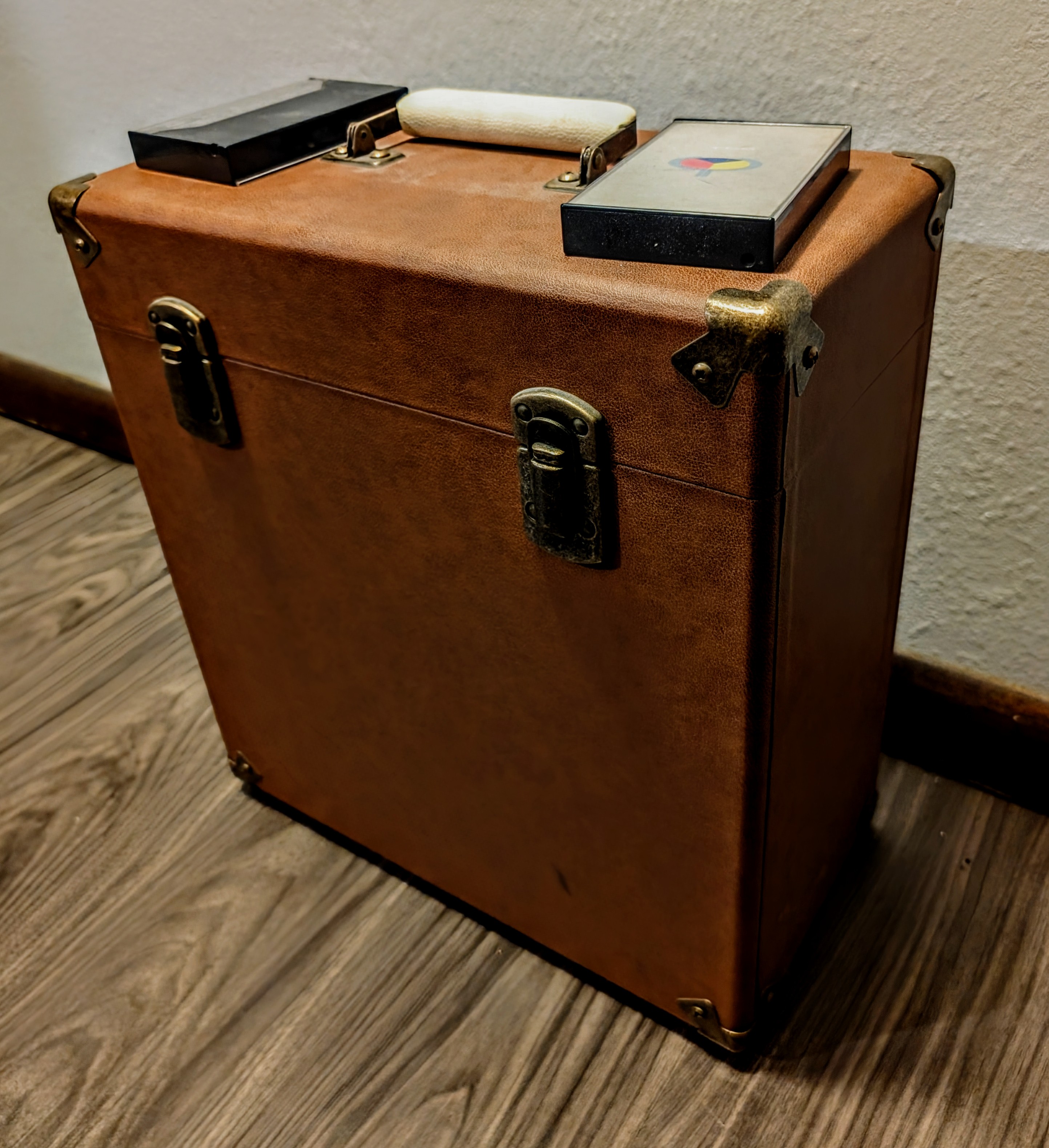
The Doors and Me
Published on Dec 8, 2025
Hold the Line: a breakup story starring Toto
Published on Dec 3, 2025
Letter From the Publisher
Published on Nov 29, 2025
Giving Thanks
Published on Nov 27, 2025
More Liner Notes…
Featured Essay: What Cataloging Vinyl Records in a Museum Taught me About Music
by Garrett Carroll

In 2015, the first summer after I began community college in Las Vegas, I took an online anthropology course and decided to switch majors to that field of study. I would eventually change my mind again, but during this time I also started volunteering at museums and libraries in the city.
In one museum, I was examining hundreds of small obsidian spearheads determining how they were made, what they were used for practically, and also imagining myself in the time period they were shaped in. Examining artifacts in this way with latex-free gloves on was like peering into lifetimes I never walked, yet getting just close enough to fill in the images of what it would’ve been like to walk in those shoes. I would’ve had a small spear stick at hand, determining the best way to stealthily hunt small game.
This sense of looking into the past also applies to holding old vinyl records. Whether I’m holding Boston’s self-titled debut album, a new pressing of a Nick Drake record, or pre-ordering a more recent rock band’s colorful record, holding a vinyl record is like holding a renewed past in that moment.
I felt the same thing cataloging a handful of vinyl records for a museum in Henderson, NV over ten years ago. While my stint as a volunteer was short-lived, the museum itself had a massive storage room with thousands of items relating to trains, planes, automobiles, music records, and other assorted knick knacks both large and small. Particularly for me, though, I was viewing the past through old, brittle, and dusty cardboard sleeves housing vinyl records.
I would take the record out of the sleeve, being sure to hold the records along their edges as any vinyl enthusiast knows to do. I would examine the condition of the grooves, making sense of where it might skip if it were placed on a record player. I would see, in my mind, this old record playing and skipping along an old 1950s record-player, the one that blared bassless through a large speaker horn. The one that a Grandma nowadays would’ve used to play music groups like Buddy Holly and the Crickets, The Four Aces, and Elvis Presley when they weren’t ingrained into the spheres of our cultural history.
Cataloging was straight-forward. While I sat at a small and dusty wooden desk surrounded by mounds of old historic items, I would pull the records from out of their crates and document. I would judge the quality of their physical condition. I would find the copyright date, the barcode, the record label, where it was pressed. I would summarize what I saw with a close examining glance, and I would summarize the genre of music. Some of the records came with lyrics printed on paper sleeves; many of these words had faded away from decades of forgottenness. I would read through them.
Cataloging vinyl records for the museum, however, differed from how I personally track my records; I didn’t listen to the records themselves. I didn’t have a record-player to play them on, so I would search for the music on YouTube in order to get an idea of what it might’ve sounded like to hear them five to six decades prior.
Some of the YouTube videos even brought forth that old-time soul, as many of the songs were likely recorded with various pops and clicks through the imperfections of recording on old analog tape.
I listen to or have listened to music in a variety of formats. Vinyl records, CDs, cassettes, mostly digital and streaming nowadays. Still, the listening experience always remains the same, and I become immersed in the music itself when I don’t have a million other thoughts buzzing through my mind at all times of the day.
I can still recall the picture of that museum storage room. The wooden slats holding all those donated and unexamined items. Their historic authenticity. The room was dim, and there was a small black lamplight at the desk I was cataloging items from. I didn’t just catalog vinyl records, I also cataloged small items like pottery and old machines, even a typewriter.
But for me, cataloging vinyl records was more relevant as they allowed me to reflect on my life up to that point. I could imagine myself waltzing around an old 1950s household swinging, swerving, and grooving to swing jazz, or tapping my feet to the 12-bar blues patterns that encapsulated much of Elvis’s recordings.
I could see the obsidian spearheads and how they were used to hunt small game. I could see how as life unfolds over the course of a generation, that the songs of an individual’s life become placemarkers to segment the timeline.
The specifics that go into a single vinyl record might only be understood over time, but as a whole it all comes together to share an ongoing history of viewing and listening. We can listen to the relationships, the broken hearts, the political oeuvres of those old artists as they sang and played the feelings of their time.
Garrett Carroll is a musician, music collector, and eclectic writer of various genres and styles. His particular style of music is in rock n’ roll and heavy metal, and he enjoys discussing music at length with anyone willing to listen. His work can be found at literallyexamined.wordpress.com.

